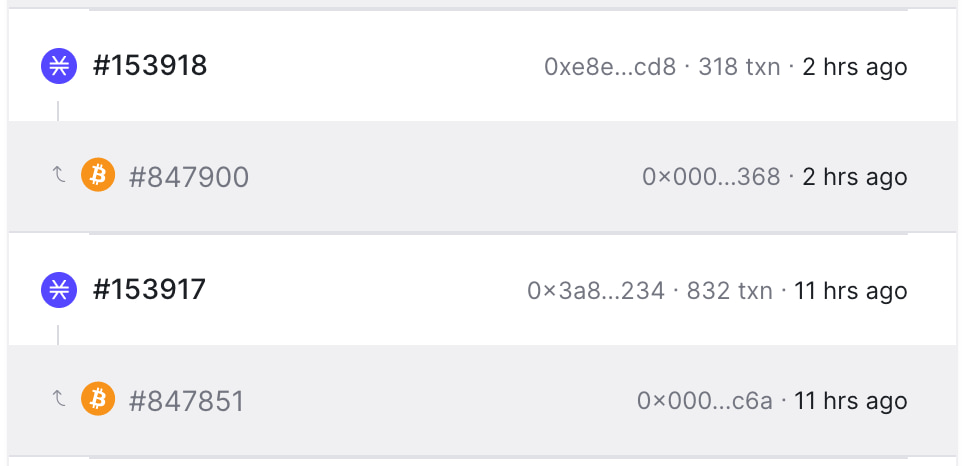The self-proclaimed leading Bitcoin (BTC) second-layer network has experienced issues with its block production, halting for the fourth time year-to-date. Stacks (STX) is a blockchain that connects to the Bitcoin blockchain and can leverage transaction throughput, staking, and smart contracts.
On June 14, Colin Wu reported a block interruption for Stacks that lasted more than nine hours. As reported, the network stopped producing blocks at block height 153917, an issue that happened before, multiple times this year.
The Bitcoin L2 network Stacks had a block interruption today, pausing block generation for more than 9 hours between blocks 153917 and 153918. Block generation resumed at 21:20 UTC+8, but only two new blocks generated. Stacks has had block generation problems many times this…
— Wu Blockchain (@WuBlockchain) June 14, 2024Finbold retrieved on-chain data from explorer.hiro showing that block 153917 went live at 1:12 a.m. UTC. Notably, the next block, 153918, followed it only nine hours later, at 10:20 a.m. UTC, halting the network transactions.

Block explorer Stacks: blocks 153917 and 153918. Source: explorer.hiro
Stacks network issues: ‘Block behavior’
Previously, the Stacks network presented similar issues, which the Stacks Status account on X calls “block behavior.” In particular, the block production halting problem happened on January 31, March 17, April 2, and June 14, 2024.
Interestingly, the team blamed an “unexpected block behavior combined with a Bitcoin reorg” for the latter and most recent issue. However, X Community Notes says the Bitcoin network has not experienced a chain reorganization recently, as stated by Stacks Status.

Stacks Status “block behavior” announcements. Source: X
Essentially, a Bitcoin chain reorganization occurs when a new, longer chain replaces the previously accepted chain. Therefore, the network adopts the new chain, considering it valid. Transactions in the old chain but not in the new one are reversed, affecting users. Miners who worked on the old chain lose block rewards. Reorgs can cause temporary confusion and financial losses, affecting second layers like Stacks built on top of Bitcoin.
According to comments in this publication, the awaited Nakamoto update on Stacks will partially address these network issues.
Stacks’s Nakamoto update
The Nakamoto update is a major overhaul of the Stacks network, designed to address the issue of block production halting and network congestion that has plagued the Bitcoin layer-2 solution since its mainnet launch in 2021. By decoupling block production from the Bitcoin blockchain itself, the update aims to increase the speed and scalability of the Stacks network dramatically.
Essentially, it introduces a new consensus mechanism called “proof-of-transfer,” which allows Stacks miners to produce multiple blocks in between Bitcoin blocks, thereby increasing transaction throughput. This parallel processing approach is expected to significantly reduce block times and improve the overall user experience on the Stacks network.
Additionally, the Nakamoto update paves the way for the introduction of sBTC, a trust-minimized bridge that will make it easier for users to port their BTC into the Stacks ecosystem. This development is anticipated to further boost the growth of the Stacks DeFi economy, which is already one of the most mature in the Bitcoin space.















